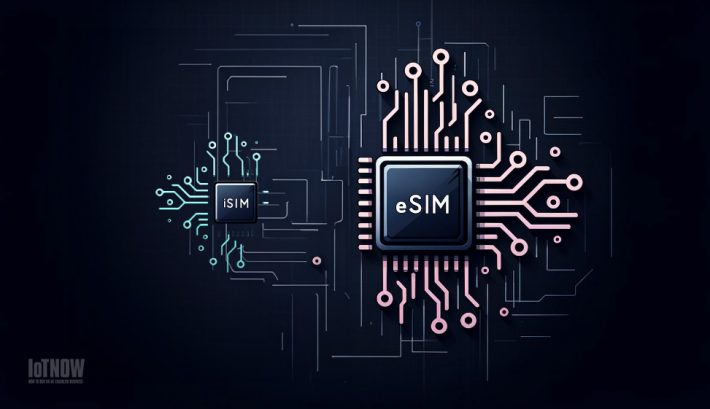[ad_1]

iSIM and eSIM are each applied sciences associated to the SIM playing cards utilized in cell gadgets, however they serve totally different functions and have totally different traits. Right here’s a breakdown of the variations between the 2.
- Definition:
- eSIM (Embedded SIM): An eSIM is a digital SIM that means that you can activate a mobile plan with out having to make use of a bodily SIM card. It’s embedded straight into the machine and can’t be eliminated.
- iSIM (Built-in SIM): iSIM integrates each the SIM performance and different system parts (just like the processor) right into a single chip. This implies the SIM performance is constructed straight into the machine’s essential chipset, reasonably than being a separate element.
- Bodily Presence:
- eSIM: Whereas it’s referred to as an “embedded” SIM, the eSIM nonetheless occupies a small bodily area on the machine’s motherboard, nevertheless it’s soldered in and never detachable.
- iSIM: There’s no separate bodily element for the SIM in any respect. The SIM performance is built-in into the primary processor or modem of the machine.
- House and Price:
- eSIM: Reduces the necessity for a bodily SIM card slot, saving area. Nevertheless, it nonetheless requires some area on the machine’s motherboard.
- iSIM: By integrating the SIM into the primary chipset, it could actually save much more area and doubtlessly cut back prices.
- Flexibility:
- eSIM: Permits customers to modify between carriers or plans with no need to swap out bodily SIM playing cards. That is particularly helpful for gadgets that may not be simply accessible for SIM card adjustments, like wearables or IoT gadgets.
- iSIM: Provides the identical flexibility as eSIM by way of service switching, however with the added advantages of integration into the primary chipset.
- Safety:
- eSIM: Provides a safe atmosphere for the storage of credentials, nevertheless it’s separate from the machine’s essential safety parts.
- iSIM: By integrating the SIM with the primary chipset, it could actually doubtlessly leverage extra superior security measures of the machine’s essential processor.
- Adoption:
- eSIM: Has seen rising adoption lately, particularly in wearables, tablets, and a few smartphones.
- iSIM: Is a more recent expertise and would possibly take a while to see widespread adoption, nevertheless it has potential, particularly on the Web of Issues (IoT) sector the place machine dimension and integration are essential.
Whereas each eSIM and iSIM intention to eradicate the necessity for conventional bodily SIM playing cards, iSIM takes it a step additional by integrating the SIM performance straight into the machine’s essential chipset. This affords potential benefits by way of area, price, and safety.
Read more about eUICC solutions here.
The flexibility to modify between carriers or plans with out the trouble of bodily swapping out SIM playing cards isn’t just a comfort – it’s a game-changer. Each eSIM and iSIM eradicate the standard constraints of bodily SIM playing cards, providing customers unparalleled flexibility in selecting their cell service suppliers.
This seamless transition between carriers, enabled by eSIM and iSIM, empowers shoppers to optimise their cell plans primarily based on their present wants, whether or not it’s looking for higher protection, extra reasonably priced charges, or short-term worldwide plans whereas travelling. These options are pivotal in powering a brand new era of IoT gadgets, from sensible wearables to related automobiles. The absence of bodily SIM playing cards means gadgets could be much more compact, sturdy, and proof against environmental components. Extra crucially, eSIM and iSIM allow real-time monitoring and monitoring capabilities. Whether or not it’s fleet administration corporations monitoring their automobiles throughout continents or logistics companies making certain the well timed supply of vital packages, the continual connectivity ensured by these applied sciences is invaluable. With the power to effortlessly change between carriers, IoT gadgets can keep optimum sign power and uptime, making certain that information flows are constant and dependable. In essence, eSIM and iSIM aren’t simply enhancing IoT connectivity—they’re setting the muse for a extra interconnected and environment friendly future.
eSIM vs. iSIM
| Attribute | eSIM | iSIM |
|---|---|---|
| Definition | A digital SIM that enables activation of a mobile plan and not using a bodily card. | SIM performance and different system parts built-in right into a single chip. |
| Bodily Presence | Occupies area on the machine’s motherboard however is soldered and never detachable. | No separate bodily element; SIM performance is built-in into the primary processor/modem. |
| House and Price | Reduces want for a bodily SIM slot, saving area however nonetheless requires some area. | Saves extra space and doubtlessly reduces prices by integrating into the primary chipset. |
| Flexibility | Change between carriers/plans with out swapping bodily SIMs. | Provides similar flexibility as eSIM however with advantages of chipset integration. |
| Safety | Safe storage of credentials, separate from essential safety parts. | Leverages superior security measures of the machine’s essential processor attributable to integration. |
| Adoption | Rising adoption in wearables, tablets, and a few smartphones. | Newer expertise; potential for widespread adoption, particularly in IoT sector. |
Touch upon this text beneath or through Twitter: @IoTNow_
[ad_2]